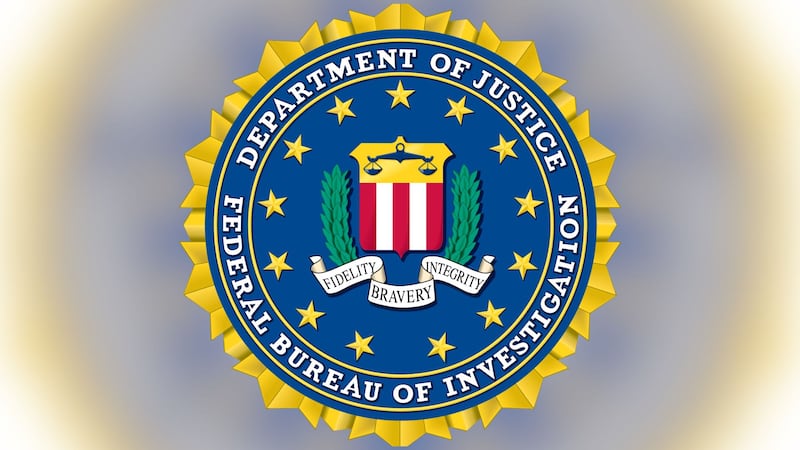Description
ATLANTA, Ga. (Atlanta News First) - Major League Baseball’s Automatic Ball-Strike Challenge System (ABS) will be used in eight Atlanta Braves games this spring.
The system will be tested in roughly 60% of Cactus and Grapefruit League games to determine whether the system is suitable for major league games in the future.
The league got its first taste of the ABS system on Thursday when Chicago Cubs pitcher Cody Poteet asked for a review in the bottom of the first inning against the Los Angeles Dodgers during a Max Muncy at-bat. A fastball was called a ball by home plate umpire Tony Randazzo and Poteet believed it caught a piece of the plate.
Poteet indicated that he wanted a review, and the call was overturned to a strike.
The first two instances of the ABS Challenge System occurred in today’s Cubs-Dodgers game.
We saw both a call overturned and confirmed. pic.twitter.com/2cIXlK6lc2
The system had been tested for years in the minor leagues and is now being tested in 13 stadiums across Arizona and Florida.
The stadiums in Florida include Publix Field at Joker Marchant Stadium (Detroit Tigers), Lee Health Sports Complex (Minnesota Twins), Clover Park (New York Mets), George M. Steinbrenner Field (New York Yankees), Spectrum Field (Philadelphia Phillies), LECOM Park (Pittsburgh Pirates), TD Ballpark (Toronto Blue Jays) and Roger Dean Chevrolet Stadium (Miami Marlins/St. Louis Cardinals).
The stadiums in Arizona include Salt River Fields (Arizona Diamondbacks/ Colorado Rockies), Camelback Ranch (Chicago White Sox/Los Angeles Dodgers), Goodyear Ballpark (Cleveland Guardians/Cincinnati Reds), Surprise Stadium (Kansas City Royals/Texas Rangers) and Peoria Sports Complex (Seattle Mariners/San Diego Padres).
CoolToday Park does not have the technology equipped for the ABS system, meaning the Braves will use the ABS system on the road this spring.
The Braves kick off spring play on Saturday when they play the Minnesota Twins at Lee Health Sports Complex in Fort Myers. Braves southpaw Chris Sale takes the mound after he posted an 18-3 record with a 2.38 ERA, earning him the 2024 NL Cy Young Award.
How does the Automated Ball-Strike System work?
Stadiums are outfitted with cameras that track each pitch and judge whether it crossed home plate within the strike zone. In early testing, umpires wore ear buds and would hear “ball” or “strike,” then relay that to players and fans with traditional hand signals.
The challenge system adds a wrinkle. During spring training, human umps will call every pitch, but each team will have the ability to challenge two calls per game, with no additions for extra innings. A team retains its challenge if successful, similar to the regulations for big league teams with video reviews, which were first used for home run calls in August 2008 and widely expanded to many calls for the 2014 season.
Only a batter, pitcher or catcher may challenge a call, signaling with the tap of a helmet or cap; and assistance from the dugout is not allowed. A challenge must be made within 2 seconds, and the graphic of the pitch and strike zone will be shown on the scoreboard and broadcast feed. The umpire then announces the updated count.
MLB estimates the process averages 17 seconds.
What is the technology?
A Hawk-Eye pose-tracking system of cameras was installed and used to track pitches and whether they are within a strike zone based on the height of each batter, who is measured without shoes before a team’s first test game. MLB estimated the calibration process at less than one minute for each player.
There are eight cameras at most of the spring training ballparks in the test and 12 at the Diamondbacks/Rockies stadium.
While the strike zone actually called by big league umpires tends to be oval in shape, the ABS strike zone is a rectangle, as in the rule book.
Developing a consensus on what a computer strike zone should be has been an issue.
When did MLB first start using ABS?
MLB started experimenting with ball/strike technology at the independent Atlantic League in 2019.
A challenge system was tried in 2021 at eight of nine ballparks that make up the Florida State League. ABS was promoted to five Triple-A parks in 2022 and expanded to all Triple-A stadiums in 2023, the robot alone for the first three games of each series and a human with a challenge system in the final three. That system was in place at the start of 2024, but MLB switched to an all-challenge system last June 25.
How successful were teams with challenges last year?
Overall return rate over the full Triple-A season was 51%, with challenges by the defense winning 54% and by the offense winning 48%. Challenges with the two-challenge limit in place averaged 3.9 per game, including 2.2 by the offense.
The success percentage has been slightly better for video reviews in the major leagues. Teams increased their success rate on video reviews to 53.7% last season, led by the Boston Red Sox at 67.9%.
Just 1.6% of first pitches were challenges, but the figure increased to 3.9% for two-strike pitches, 5.2% for three-ball pitches and 8.2% for full counts.
Challenge percentages were more likely later in the game. While 1.9% of pitches were challenged in the first three innings, 2.5% were challenged from the fourth through the sixth, 2.8% in the seventh and eighth and 3.6% in the ninth.
How has the computer strike zone changed over time?
MLB has changed the shape of the ABS strike zone several times.
It started with a 19-inch width in 2022, then dropped it to 17 inches — matching the width of home plate. Narrowing the strike zone led to an increase in walks and only small changes in strikeout rates.
The top of the strike zone was 51% of a batter’s height in 2022 and 2023, then raised to 53.5% in 2024 after pitchers' complaints the top had been too low. The bottom of the strike zone has been 27% since 2022 after initially being set at 28%.
A batter’s stance is not taken into account.
ABS makes the ball/strike decision at the midpoint of the plate, 8 1/2 inches from the front and 8 1/2 inches from the back. The contrasts with the rule book zone called by umpires, which says the zone is a cube, and a strike is a pitch that crosses any part.
Strikeout rates increased 0.5% and walk rates rose 1% in full ABS games and 0.8% in challenge games.
How will ABS impact broadcasts?
Concerned the strike zone box on broadcasts could tip whether to challenge and cause fans to yell at players to challenge, MLB plans to experiment with several broadcast alternatives, among them: show the box but not the ball; show the ball but not the box; and to show only corners of the box.
How can players give feedback?
Dugout iPads available to all teams will have an application called ProTABS that allows players to check pitches against their individual strike zone. Information will update after every plate appearance and players can give MLB comment on single pitches and the overall system.
News Source : https://www.walb.com/2025/02/21/mlbs-automated-ball-strike-challenge-system-be-used-8-braves-spring-training-games/
Other Related News
02/23/2025
ATLANTA Ga Atlanta News First - On Feb 22 2024 a 22-year-old Augusta University nursing st...
02/23/2025
COFFEE COUNTY Ga WALB A dramatic high-speed pursuit in Coffee County on the night of Febr...
02/23/2025
ALBANY Ga WALB - Fridayrsquos sunshine brought no warmth as highs topped upper 40s low 50s...
02/23/2025
COLUMBIA SC AP Condemned South Carolina inmate Brad Sigmon has chosen to die next month b...
02/23/2025





















